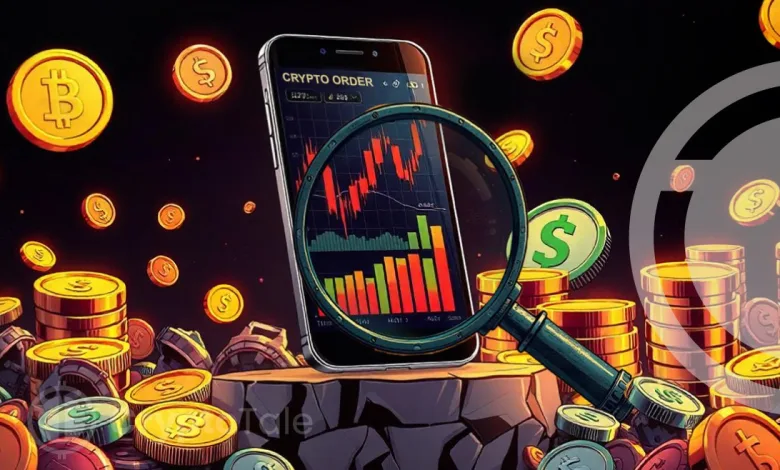Crypto Trading 101: Exploring Crypto Order Types and Uses

Trading in cryptocurrencies is about using the right indicators to buy and sell at the optimal time, as well as executing these trades in the most effective way possible. Given the high frequency of volatile fluctuations in the crypto market, choosing the right order type that will yield a profit is the key. Whether you are a day trader or planning to invest in the long term, it is imperative for every trader to understand these products. In this guide, learn about various types of crypto orders and what each of the orders can do for you in the world of cryptocurrency trading.
Market Orders
Market Orders are one of the most efficient and easiest ways of purchasing or selling cryptocurrencies. When the trader makes an order, the deal is done at the spot price, which means the trader is buying or selling the coin at the current price, not at a higher or lower price. These types of orders are mostly applied in cases where a trader requires an early exit or entry to the market.
Example: Let’s assume the XRP’s price is $1, and you are placing a market order at this price. This means when you are buying or selling the coin at this price, the order will be executed immediately.
Pros:
- Transactions are executed immediately.
- Preferred by traders who are keen on speed rather than price.
Cons:
- Orders will not be executed if they aren’t filled out instantly.
- Because of slippage, sometimes orders will be filled at a different price than you expected.
Related:
Limit Orders
A limit order is an order placed by traders to buy or sell the coin at a specified price other than the current market price. When the price arrives at the desired value, the order will be executed immediately. Usually, there would be a large number of limit orders at a specific price, and the orders are fulfilled based on the time stamp on the order book. This means traders who placed their order first will take precedence over orders from latecomers.
Example: If the current price of Ethereum is $2,600 and a trader places a limit order at $2,700 or $2,500, the order will only be executed when the price reaches that value.
Pros:
- Traders are allowed to set the price for buying and selling coins.
- Limit orders help traders avoid slippage and price volatility.
- It reduces the need for traders to monitor the market for good entry and exit points.
Cons:
- The limit order can only be executed if there are buy or sell orders at that price. If no such orders are available at that specific price, the order will not be executed.
- Orders will be filled based on the time the order is placed in the order book.
Stop Orders
Stop orders are orders that can become market orders once the traders’ set stop limit has been reached. They are used to protect gains or mitigate losses by selling or buying coins at that given price.
Example: If a trader buys Bitcoin at $30,000 and sets a stop order at $35,000, the trade (sell) will be executed once the price reaches $35,000, allowing the trader to secure a $5,000 profit.
Pros:
- Gives flexibility to traders when deciding on strategies for short and long trades.
- It helps limit losses and secure profits due to price volatility.
Cons:
- At times, the short-term volatility may cause the order to be executed even when the market is in favorable conditions.
- In volatile markets, it could be executed only after the stop price, which is not desirable in most cases.
- Prone to slippage when the order gets executed.
Stop Loss Orders
Stop loss orders are used by traders to reduce losses by selling or buying coins once the set stop price has been reached.
Example: An investor purchased Solana at a price of $120, putting a stop loss at $100. If the price is reduced to $100, the order will be executed to minimize any further loss.
Stop Limit Orders
Stop limit orders contain both stop orders and limit orders, where the trader can set the stop price as well as the limit price. If a coin price gets to the stop price of the trader, the trade does not take place, but the order turns into a limit order, and the trade takes place when the value gets to the limit order price.
Example: To do this, traders will set the stop price at $19,000 and the limit price at $18,500 for Bitcoin while it is trading at $20,000. This means the order will be triggered when Bitcoin’s price drops to $19,000 (the stop price). Once triggered, a limit order is placed to sell Bitcoin at $18,500 or higher. This setup allows traders to control their losses while ensuring they do not sell below their desired minimum price.
Pros:
- It assists the trader in avoiding selling their stocks at very low prices, and at the same time, they will not incur a big loss if the price continues to fall.
- It reduces the risks involved in trading by limiting the losses while protecting the profits.
Cons:
- The two conditions (stop price and limit price) have to be met before the transaction can be executed.
- Traders need to carefully consider the stop and limit prices, as setting them both too far apart or too close would result in the unsuccessful execution or reduce the effectiveness of the trade.
Take Profit Orders
Take profit orders are used to secure profit that comes from selling the coin. These orders are normally placed at a higher price than the current price, and the trade is done once the market reaches this price.
Example: If Ethereum is currently at $2,500 while a trader sets the take profit order to $2,600. When the price arrives at the take profit order price, the trade will happen.
Pros:
- Helps secure profits automatically.
- Traders can determine at what price they are willing to sell.
Cons:
- The trade won’t be executed if the value doesn’t reach the specified price.
- The price may touch the limit and fall afterward, resulting in missed opportunities.
Trailing Stop Orders
Trailing stop orders helps traders protect their profit while minimizing their losses. Unlike other orders, they can set the stop price below the current price and adjust it based on market conditions. Trailing orders can be of percentage or value type and can be useful for increasing traders’ profits.
Example: Suppose Solana is at $130, placing a trailing stop at $20, and the stop loss must be at $110. Thus, when the uptrend matures and the price reaches $200, your stop loss will be $180. If the price drops to the defined stop loss value, then your order will be activated and completed.
Pros:
- Traders can maximize their profits while minimizing losses.
- Automatically adjust the stop loss for maximum profit.
Cons:
- Stop loss can be activated early due to short-term market volatility.
- Traders have no control over the price at which the trade is actually executed.
Related:
Other Order Types
- Good Till Cancelled Order (GTC): It works until the order is completed or the trader deletes it.
- Good Till Date Order (GTD): Traders can specify a date until which the order remains active. If they don’t execute the order, it’ll automatically be canceled.
- Fill or Kill Order (FOK): In this, the order will be canceled if it isn’t filled immediately.
- Immediate or Cancel Order (IOC): Unlike a Fill or Kill order, an IOC order allows for partial fulfillment. If the order cannot be fulfilled completely, part of the order that has been fulfilled will get executed, while the other will get canceled.
Conclusion
Getting to know different order types is essential for making informed decisions and minimizing losses in cryptocurrency trading. Each order type has its own advantages and is suited for particular trading styles. Understanding how these orders work helps you navigate the market with confidence. Using the right order at the right time can make all the difference between a winning and a losing trade.




